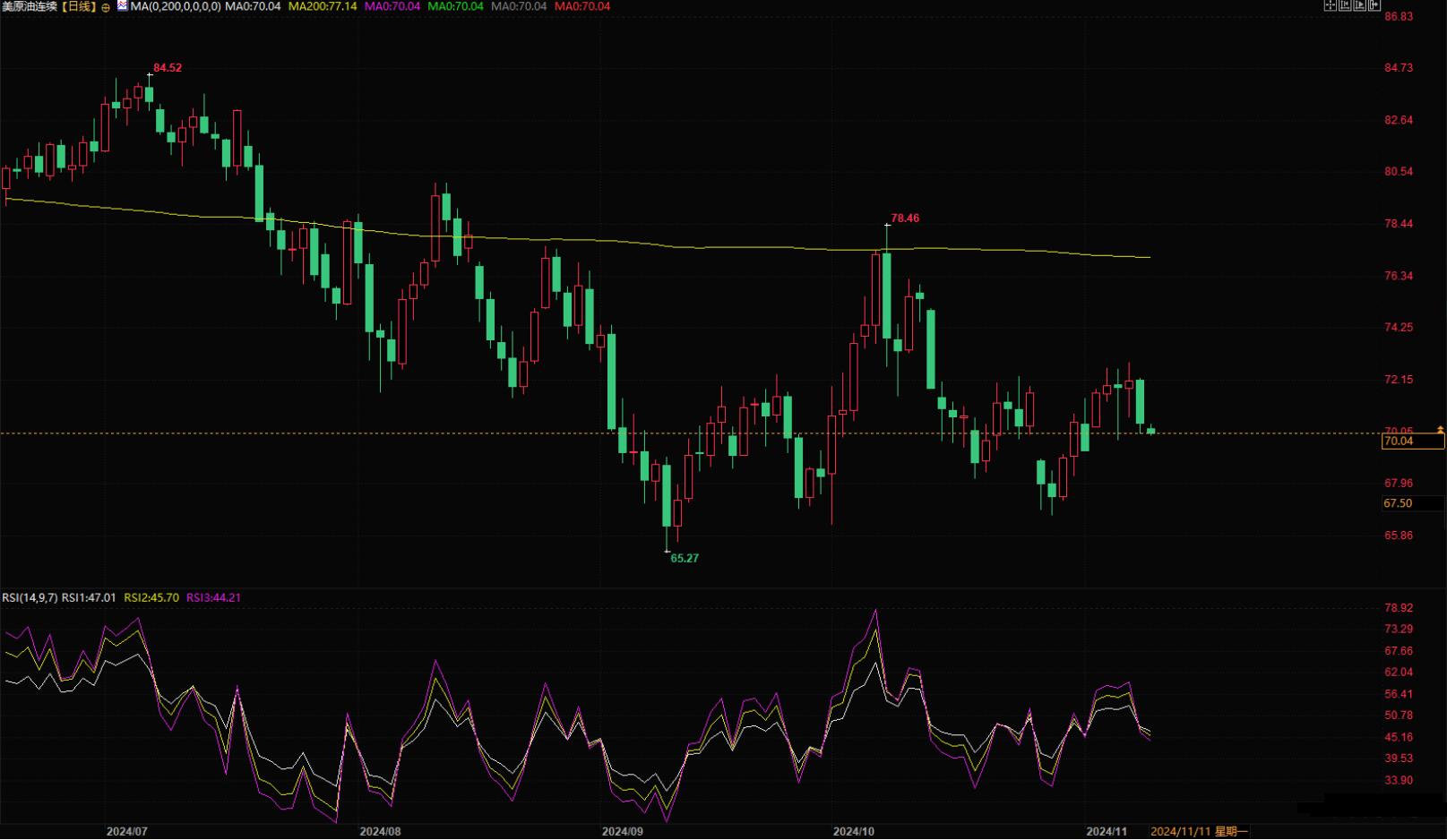Standard Chartered: US crude oil production will not surge during Trump's second term
Last week, the oil market experienced severe volatility, with Brent crude oil's January delivery contract falling sharply after Trump defeated Harris to win the White House leadership, and then rebounding. Wall Street is concerned that Trump's second term may put pressure on oil prices, as producers will be eager to increase drilling and production after getting rid of the cumbersome regulations of the Biden era. However, commodity experts from Standard Chartered Bank believe that US crude oil production, especially unconventional shale oil production, has undergone significant changes compared to when Trump first took office in 2017.
Standard Chartered expects a slowdown in the growth rate of US crude oil production this year and 2025
Standard Chartered pointed out that US crude oil production reached a historic high of 13.4 million barrels per day in August 2024, surpassing the record of 13.31 million barrels per day set in December 2023. Since the trough in May 2020, US crude oil production has increased by 4.7 million barrels per day, but compared to the peak in November 2019, it has only increased by 400000 barrels per day, equivalent to an average annual growth of 80000 barrels per day during this period.
In addition, Standard Chartered expects that the production growth rate in the United States will continue to slow down this year and 2025. Although the US crude oil supply increased by 1.605 million barrels per day in 2023, Standard Chartered predicts that the overall growth for 2024 will only be 630000 barrels per day and will further decrease to 300000 barrels per day in 2025.
Capital discipline may slow down shale oil growth rate
Standard Chartered pointed out that the dynamic nature of shale oil production in the United States makes it difficult to sustain long-term supply growth, especially as US crude oil production is mainly dominated by a few large corporations, independent producers, and private companies, rather than being dominated by national crude oil companies like most OPEC oil producing countries. Most of these companies have abandoned the strategy of "drilling hard and doing hard" in the early years, and instead adopted strict capital discipline, preferring to return more capital to shareholders through dividends and stock buybacks.
Standard Chartered also pointed out that large-scale mergers and acquisitions have reduced the number of operating companies in the industry, gradually shifting the production pattern from scattered plots of small producers to continuous plots of land operated by larger companies. This new operating method enables the application of complex drilling and completion technologies, including the use of multi well platforms and ultra long horizontal sections of drilling technology, which can optimize well spacing and related infrastructure. Despite the decrease in the number of drilling rigs, the improvement in drilling and completion efficiency has continued to increase production.
Standard Chartered's viewpoint seems to be consistent with Goldman Sachs. In July of this year, Goldman Sachs predicted that US crude oil production would increase by 500000 barrels per day this year, slowing down from last year's growth of over 1 million barrels per day. However, the United States will still account for 60% of non OPEC production growth, and the Permian Basin is expected to achieve an annual growth of 340000 barrels per day, which is lower than Goldman Sachs' forecast of 520000 barrels per day at the beginning of the year.
Goldman Sachs pointed out that shale oil production in Texas and New Mexico has almost entirely benefited from technological and efficiency improvements since 2020, but warned that "the Permian Basin is gradually entering a mature stage, and the deterioration of its geological conditions will suppress crude oil production in the future." Goldman Sachs revealed that the number of drilling rigs in the Permian Basin has decreased by nearly 15% from its peak in April last year to the current 309, which is 30% lower than the average level in 2018-2019. Goldman Sachs predicts that by the end of 2025, the number of drilling rigs in the Permian Basin will be less than 300.
Shale oil high decline and policy lag slow down production increase
Standard Chartered also pointed out that the production characteristics of shale oil are different from traditional crude oil. Shale oil production rises rapidly, but peak production can only be maintained for a relatively short period of time, usually only a few months, before entering a period of rapid decline. The attenuation rate depends on multiple factors, including reservoir characteristics, completion techniques, and production reduction strategies, and can be as high as 40-80%. Such a high decay rate and short production cycle mean that there is a constant need for new production to come online.
Standard Chartered predicts that if managed properly, the supply of crude oil in the United States will remain stable at the current price level.
Finally, Trump may open up federal land for exploration and production. However, Standard Chartered pointed out that the process from licensing, exploration, evaluation to final production is a long-term one, which means that production on federal land may not be realized until after Trump's four-year term ends.

(Daily chart of US crude oil)
Tips:This page came from Internet, which is not standing for FXCUE opinions of this website.
Statement:Contact us if the content violates the law or your rights
